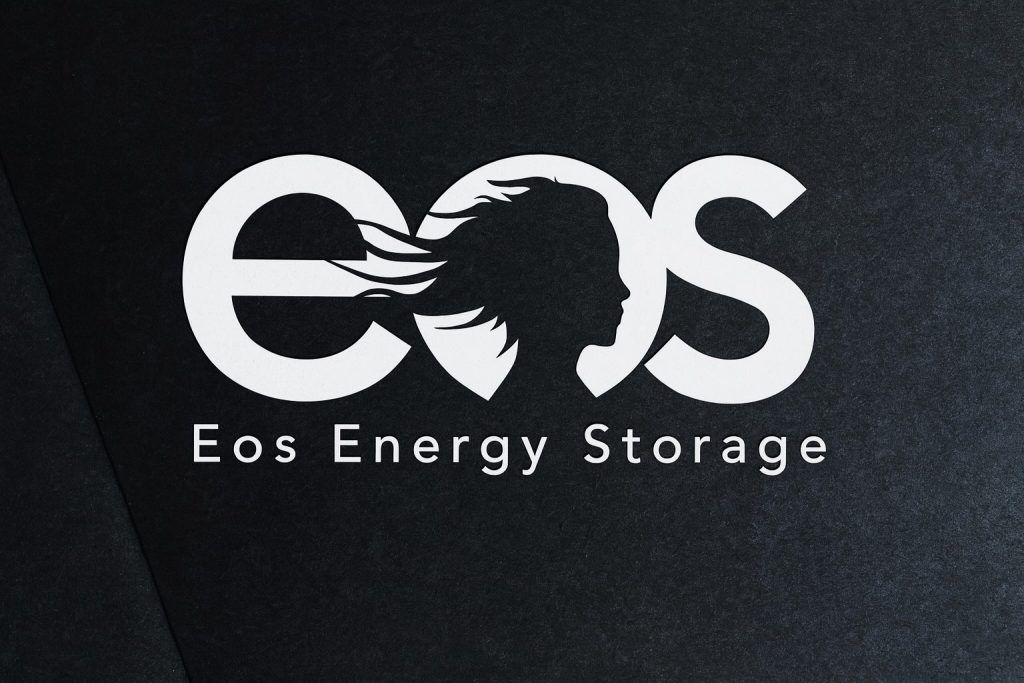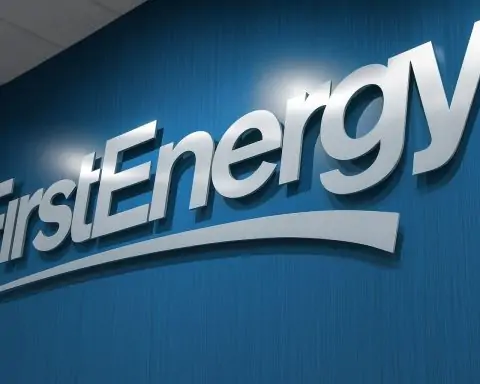Key Facts (as of Oct 3, 2025): U.S. markets are open (Fri Oct 3). Peabody Energy (NYSE: BTU) is trading around $31.0 per share (as of ~10:30 AM EDT), up roughly +5.9% on the day [1]. Trading volume is heavy (20-day avg ~5.4 M shares [2]). Market Cap is ≈$3.9 billion [3]. Key ratios: trailing P/E ≈28.8, forward P/E ~64 [4] (reflecting squeezed near-term earnings); EPS (TTM) ≈$1.10 [5]; Revenue ~$4.04 B (TTM) [6]. Peabody pays a $0.30 annual dividend (~1.0% yield) [7] (last declared $0.075 in Q3’25 [8]). Financially, Peabody holds net cash (~$192M: $586M cash vs $394M debt [9]) and book equity ~$3.67B. Analysts are mixed: consensus leans “Moderate Buy” (e.g. 4 Buys, 1 Hold on MarketBeat) [10] with an average 12-mo target ≈$22–24 [11] [12] (range ~$17–27). Recent company news dominates headlines: Anglo American arbitration (over a terminated coal deal) [13] [14], Peabody’s embrace of U.S. coal policy, and massive federal coal lease auctions (~600 M tons) [15].
Market Snapshot & Financial Metrics
Peabody stock has rallied sharply in recent weeks. It closed around $29.31 on Oct 2 [16] and hit ~$31 on Oct 3. The price is well above key technical levels (50-day MA ~$19.4, 200-day MA ~$16.2 [17]) and the RSI is very high (≈85), indicating overbought short-term conditions [18]. TipRanks labels its “Technical Sentiment” as Buy [19].
On fundamentals, Peabody’s market capitalization is about $3.9 billion [20]. Over the last 12 months it earned ~$138.7 M net income (EPS $1.10) on $4.04 B revenue [21], but recently reported a Q2’25 net loss of $27.6 M (–$0.23/share) [22] (missing consensus). The trailing P/E ratio is ≈28.8 [23]; forward earnings are expected to be lower, yielding a P/E above 60. Peabody holds ample cash (net cash ~$192M) and a low debt ratio (D/E ~0.11 [24]), supporting a strong balance sheet. It pays a quarterly dividend of $0.075 (annual $0.30) [25], with a payout ratio only ~27% [26]. Other stats: β≈0.66 (lower volatility) [27], average daily volume ~5.4M [28].
Recent News & Developments
Anglo American Arbitration: The big headline is legal. Reuters reported Oct 3 that Anglo American has started arbitration against Peabody after Peabody walked away from its $3.78 billion bid for Anglo’s Australian coal assets [29]. Peabody had invoked a “material adverse change” clause following an underground mine fire and terminated the deals in August. In a regulatory filing, Peabody said it is “confident that a material adverse change occurred, entitling Peabody to terminate the purchase agreements” [30]. Peabody also noted Anglo has returned $29 M of Peabody’s $75 M deposit to date, and it is demanding the remaining $46 M [31]. This dispute has been front-page news and is being watched for any impact on Peabody’s finances or strategy.
Company Disclosures: In related filings, Peabody confirmed that it terminated the Anglo acquisition after a mine incident and that it has formally demanded the deposit return [32]. The company’s Q2 results (July 2025) showed EPS –$0.23 [33] (below estimates), and in mid-September the board declared a quarterly dividend of $0.075/share (record date Aug 14, 2025) [34].
Energy Policy & Auctions: Beyond corporate filings, Peabody is in the spotlight of U.S. energy policy. The Trump administration has emphatically rolled out a “coal revival” agenda, resuming large federal coal lease sales. In October 2025, the U.S. is offering nearly 600 million tons of coal reserves in auctions across Alabama, Utah, Montana and Wyoming [35]. These auctions (the first major federal coal sales in years) feature greatly reduced royalty rates (7% flat [36]) and are intended to stimulate coal mining investment. Peabody publicly praised the administration’s coal initiatives – in a Sept 29 statement it said: “We applaud President Trump for the bold actions…to restore balance to U.S. energy policy and reaffirm coal’s vital role in keeping the lights on” [37]. (The company also noted the new emphasis on domestic rare earth minerals in these policy announcements [38].)
Analyst Views & Stock Outlook
Wall Street opinions on BTU are varied. Broadly, analysts see price targets in the $17–$27 range. According to Intellectia, the consensus 12-month target is about $19.7 (low $17, high $24) [39]. MarketBeat similarly notes 4 Buys and 1 Hold on Peabody, with an average target ~$22.90 [40].
- Bullish views: Texas Capital (analyst Matthew Key) initiated coverage Sept 2025 with a Buy and $27 target, citing Peabody’s expanded metallurgical (steelmaking) coal business and global scale as growth drivers. Key noted Peabody’s “scale and global footprint” and focus on met coal leaves it “in a strong position to target growing end-markets in Asia and other emerging economies” [41]. Similarly, B. Riley analyst Nishan Giles (via MarketBeat) maintains a Buy with a $24 target, despite recently cutting Q3 EPS estimates to –$0.20 [42].
- Cautious views: UBS (analyst Myles Allsop) has a neutral stance – it recently raised its target modestly (to $17 [43]) but reiterated a “Neutral” rating. MarketBeat notes UBS earlier lifted its PT from $14 to $15.50 (Aug 2025) [44]. Other outlets highlight that Wall Street Zen recently downgraded Peabody to Sell. In summary, about half of analysts rate BTU as Buy and half as Hold; their average price forecasts suggest downside from today’s levels [45] [46].
On technical signals, automated tools are very bullish: short- and long-term moving averages have “buy” crossovers [47], and TipRanks’ “Spark” model scores BTU as Neutral given its high valuation, though TipRanks’ own aggregate data shows a hold consensus with ~$17 target [48]. (Notably, TipRanks quotes BTU’s market cap ~$3.44B [49] and an average volume ~5.16M [50].) The stock is currently extremely overbought (RSI ~89 [51]), so some traders warn of a near-term pullback to support levels near ~$26–$27 [52].
Sector & Market Trends
Peabody’s prospects hinge on coal market fundamentals and broader energy trends. Global coal demand hit a record in 2024 (≈8.79 billion tonnes, +1.5% from 2023) driven by surges in China and India [53], even as consumption in the U.S. and EU fell. The IEA expects this trend to plateau – global demand should hold roughly flat into 2025 and decline only marginally (~0.9%) in 2026 [54]. In Asia, coal remains king for power and steel, whereas U.S. and European coal use is stabilizing or slowly rising from very low levels.
Domestically, coal’s role has recently ticked up: Reuters reports U.S. coal-fired generation reached 16.3% of utility power in Jan–Aug 2025, up from 14.7% a year earlier [55]. This was largely due to spiking natural gas prices (coal was cheaper than gas) [56]. However, since mid-2025 gas prices have fallen, making coal more expensive in comparison, and pressuring utilities to switch back to gas [57]. Long-term, coal faces stiff competition from renewables and storage. Utilities have been adding more solar/wind capacity than anything else, squeezing coal’s share of generation [58]. Even with recent policy support, commentators caution that without building new coal plants or maintaining a coal advantage over gas, coal’s U.S. rebound may be short-lived.
Geopolitical/Regulatory: Besides auctions, Peabody watches climate and policy shifts. Coal-fired power is a major emissions source (≈40% of U.S. power emissions at <20% generation [59]), so environmental regulations remain a risk. Overseas, demand hinges on China/India’s policies and global fuel prices. Recent Chinese coal capacity limits in 2025 (per IEA) helped drive U.S. coal back into the mix temporarily [60]. Any further carbon regulations or clean energy incentives could pressure coal stocks.
Commodity Prices: Thermal coal prices were volatile in 2025. The price gap between coal and gas has narrowed. (At one point coal energy was ~$1.15/MWh cheaper than gas [61], but by late Q3 coal trades at a slight premium [62].) Metallurgical coal (for steel) is in tighter supply globally, which could benefit producers like Peabody that sell into both markets.
Analyst Quotes & Perspectives
- Peabody spokesperson: In its filings Peabody emphasized the mine incident: “Peabody remains confident that a material adverse change occurred, entitling Peabody to terminate the purchase agreements.” [63]
- B. Riley: Analyst N. Giles notes Peabody’s cost control, but reduced Q3 EPS to –$0.20. He maintained a “Buy” rating and $24 target [64].
- Texas Capital: Analyst Matthew Key praised Peabody’s global strategy, saying its “scale and global footprint is a major differentiator… putting Peabody in a strong position to target growing end-markets in Asia” [65]. He started coverage Buy/$27 PT on this basis.
- UBS: Myles Allsop (UBS) kept a Neutral view, recently raising his PT to ~$17 [66], reflecting concerns over coal pricing and a tepid outlook.
Forecast & Technical Outlook
Analyst 12-month consensus (≈$20) implies a pullback from current levels. Many see near-term upside limited by rich valuation (TTM P/E ~29) and overbought technicals. Short-term trend remains up – moving averages and momentum indicators are strongly bullish [67] [68] – but a retracement to support (mid $20s) is likely if the stock stalls. For longer-term holders, the stock’s fate depends on coal market fundamentals: if global steel and power coal demand holds up and U.S. policy props up production, Peabody could justify higher prices. Conversely, any cooling in coal prices, failed deals (like Anglo), or new ESG restrictions could cap gains.
Sources: Company filings and press releases; Reuters & Investing.com news (arbitration, coal policy) [69] [70]; analyst reports via MarketBeat, TipRanks, GuruFocus and Intellectia [71] [72]; stock data from MarketBeat and StockAnalysis [73] [74]; IEA coal report [75]; regulatory trend analysis [76] [77]. All figures are from October 2025 publications as cited.
References
1. www.marketbeat.com, 2. stockanalysis.com, 3. stockanalysis.com, 4. stockanalysis.com, 5. stockanalysis.com, 6. stockanalysis.com, 7. stockanalysis.com, 8. www.investing.com, 9. stockanalysis.com, 10. www.marketbeat.com, 11. www.marketbeat.com, 12. intellectia.ai, 13. www.reuters.com, 14. www.reuters.com, 15. discoveryalert.com.au, 16. stockinvest.us, 17. stockanalysis.com, 18. stockinvest.us, 19. www.tipranks.com, 20. stockanalysis.com, 21. stockanalysis.com, 22. www.prnewswire.com, 23. stockanalysis.com, 24. stockanalysis.com, 25. www.investing.com, 26. stockanalysis.com, 27. stockanalysis.com, 28. stockanalysis.com, 29. www.reuters.com, 30. www.reuters.com, 31. www.investing.com, 32. www.investing.com, 33. www.prnewswire.com, 34. www.investing.com, 35. discoveryalert.com.au, 36. discoveryalert.com.au, 37. www.investing.com, 38. www.investing.com, 39. intellectia.ai, 40. www.marketbeat.com, 41. intellectia.ai, 42. www.marketbeat.com, 43. www.gurufocus.com, 44. www.marketbeat.com, 45. intellectia.ai, 46. www.marketbeat.com, 47. stockinvest.us, 48. www.tipranks.com, 49. www.tipranks.com, 50. www.tipranks.com, 51. stockinvest.us, 52. stockinvest.us, 53. iea.blob.core.windows.net, 54. iea.blob.core.windows.net, 55. www.reuters.com, 56. www.reuters.com, 57. www.reuters.com, 58. www.reuters.com, 59. www.reuters.com, 60. www.reuters.com, 61. www.reuters.com, 62. www.reuters.com, 63. www.reuters.com, 64. www.marketbeat.com, 65. intellectia.ai, 66. www.gurufocus.com, 67. stockinvest.us, 68. stockinvest.us, 69. www.reuters.com, 70. www.investing.com, 71. www.marketbeat.com, 72. intellectia.ai, 73. www.marketbeat.com, 74. stockanalysis.com, 75. iea.blob.core.windows.net, 76. www.reuters.com, 77. discoveryalert.com.au










